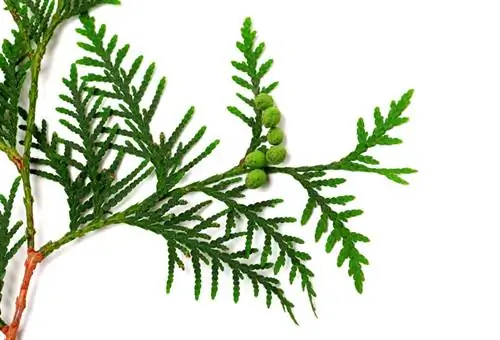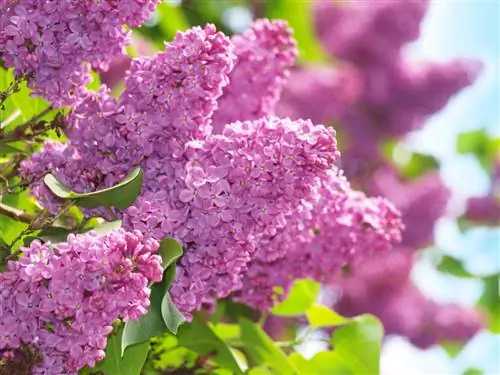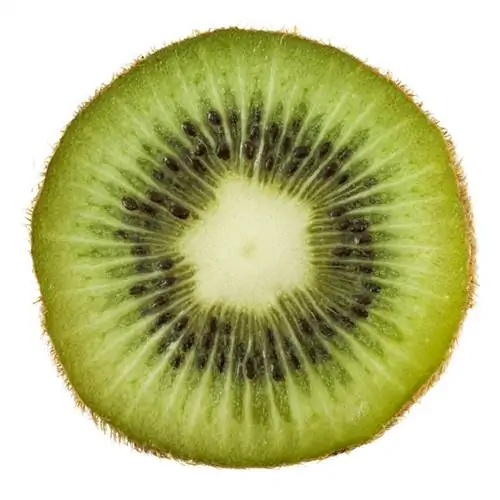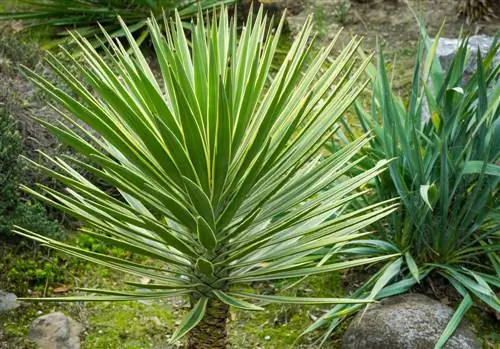- Author admin [email protected].
- Public 2023-12-16 16:46.
- Last modified 2025-06-01 06:02.
It is difficult for the layperson to tell whether a conifer is cypress or thuja. There are some distinguishing features, but they are minor. If in doubt, ask an expert to show you the differences.
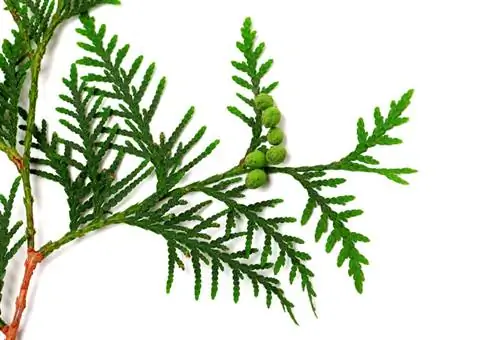
What are the differences between thuja and cypress?
The differences between thuja and cypress lie in the smell, the shape of the needles, the appearance, the color change in winter and the cones. Thuja has a stronger smell, coarser needles and elongated, yellowish cones, while cypress has a lemon-like scent, finer needles and rounded, multicolored cones.
Cypress or Thuja - what are the differences?
- Smell
- Needle shape
- Appearance
- Color change in winter
- Cones
Both conifers exude an aromatic scent when the leaves are rubbed between the fingers. The scent of thuja is more pronounced. The aroma of cypress is more reminiscent of lemon, while the smell of thuja is reminiscent of gummy bears. However, this difference can often only be determined when both species grow next to each other.
The needles of thuja appear coarser than those of cypress. They are often darker, although cypress trees come in very different colors.
In winter the color of the tree of life's needles changes. There is no noticeable change in the color of the cypress.
Difference in the cones
Cypresses have small cones that are rounded and yellowish, greenish or bluish, depending on the species. They stay on the tree for a very long time and often only open after several years when they have become woody. They also open when exposed to strong heat, for example from a fire.
The cones of Thuja, on the other hand, have an elongated shape and are yellowish. They become woody more quickly and then burst open.
Thuja is less demanding in terms of location
In contrast to the cypress, Thuja copes quite well with shady locations. Compacted soil also affects the tree of life less than the cypress. The waterlogging that occurs on compacted soils promotes the development of diseases in cypresses.
However, thuja needs more nutrients than a cypress. You need to fertilize the trees more often.
Similarities between cypress and thuja
Both plants are poisonous. They should therefore not be planted in gardens with children or pets.
Cypress and Thuja tolerate pruning equally well and are therefore suitable as hedge plants.
Tip
If you want to plant a hedge in a shady location, neither cypress nor thuja are the right choice. Yews and taxus are much better suited for shaded areas.

